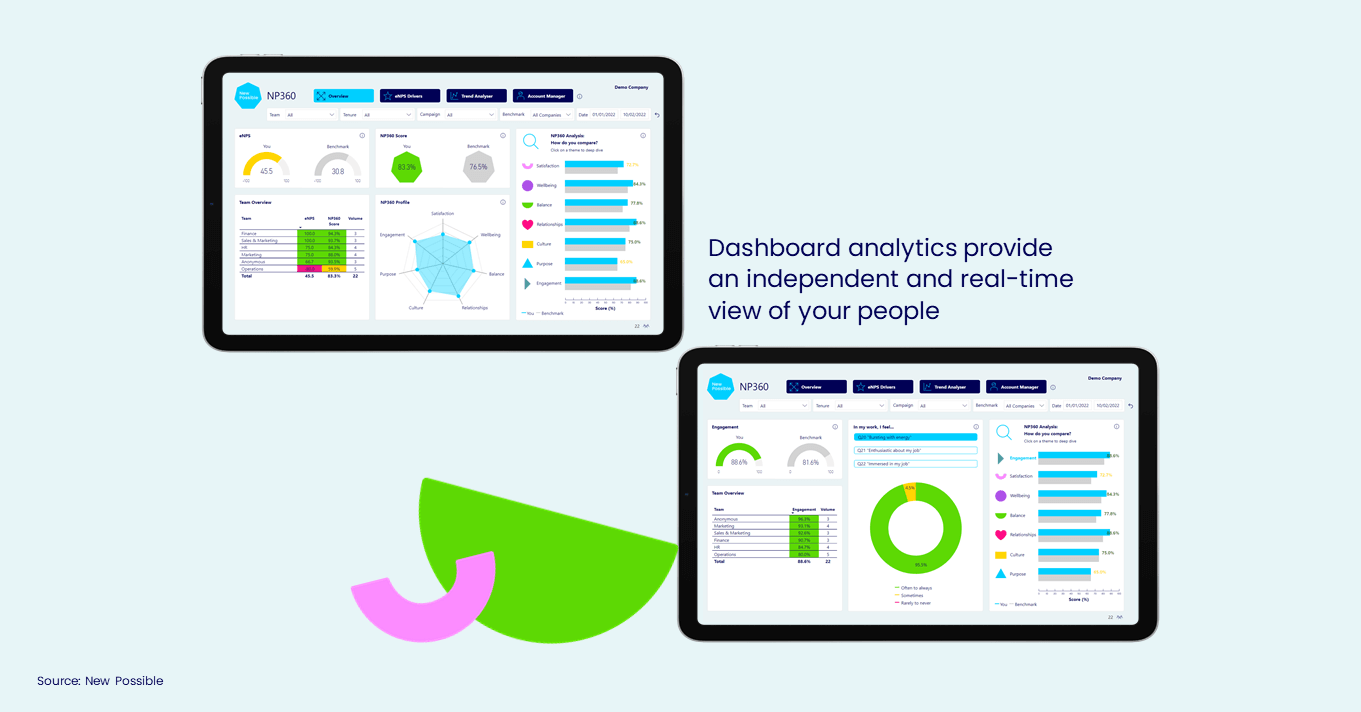Over the last two years we’ve endured a pandemic and economic disruption that has affected all of us. With no playbook, businesses and their people responded as best they could, with deep-rooted practices being redefined almost overnight. However, such rapid adjustment to our way of working has taken its toll, with over a third of employees reporting a lack of energy.
We’ve developed technology to objectively measure fatigue in your workforce, based on a similar approach used onboard the International Space Station. You can include this interactive fatigue test in your NP360 assessment.
This article explores fatigue in more detail, including how it can be measured and minimised.
What is fatigue and why does it matter?
Fatigue refers to impairment in task performance and it’s usually caused by prolonged mental or physical work, exposure to stress and anxiety, or sleep loss. It can also be a symptom of burnout.
It’s something most of us have experienced and it stops us from being our best. When tired, we’re more likely to make mistakes and bad decisions. In the most extreme circumstances, this can have devastating results; for example, fatigue is believed to have played a significant role in the Chernobyl and Three Mile Island disasters.
Fatigue also poses a heavy burden on the economy. Research by Rand Europe suggests that it may cost the UK £40bn a year due to its effects on absence and productivity. Whilst rotational shift workers may be at greater risk, a poor work-life balance or change in personal circumstances can lead to anyone becoming fatigued. When chronic, it can also pull down our overall health and wellbeing.
It’s clear that by managing fatigue, we can help employees bring their best selves to work and reduce the costs associated with absence, accidents, and turnover.
How we measure fatigue
Fatigue can be measured subjectively through surveys, interviews, or diary studies, or objectively by measuring physiological processes or performance.
At New Possible, we’ve developed an objective test, based on the psychomotor vigilance task (PVT).
The PVT is fundamentally a reaction time test and involves recording how quickly it takes someone to react to a stimulus. If a button isn’t pressed within a certain amount of time, it counts as a lapse. This process is repeated over several minutes and the greater the number of lapses, the higher the likelihood that they’re fatigued.
Although simple, it’s highly effective. By being free of learning effects and aptitude differences, the PVT is straightforward to interpret and that’s why it’s been used on multiple NASA missions.
We’ve adapted this test so that it can be taken in any web browser. Because mice, keyboards and touchscreens have varying degrees of latency (the time taken for a click to register on a computer), we’ve introduced additional confidence thresholds to increase its reliability.
The interactive test takes just 3 minutes to complete, and you can try it out here.
Results are categorised on a scale from low to high levels of alertness, which is strongly associated with your level of fatigue.
Fatigue varies throughout the day, but our always-on NP360 assessment gives you a big picture view of your workforce, so that you can accurately monitor trends over time and proactively identify teams that may need additional support.
4 tips to minimise fatigue in the workforce
Our people chemists have shared the following four tips to help re-energise your workforce.
- ‘You can't manage what you don't measure’
People are less likely to speak about their health and wellbeing and although society is increasingly open about these issues, it’s still difficult for leaders to gauge accurately. That’s why our first tip in minimising fatigue, is to measure it. - Develop a culture that works smarter not harder
‘You get applauded when working silly hours’. If this sounds familiar, your organisation may be placing too much value on the amount of voluntary overtime worked. And whilst it can show dedication, balance is key. Chronic overtime can be at the expense of productivity and wellbeing. - Promote health and wellbeing
At an individual level, there are many actions that can reduce fatigue. The NHS offers a comprehensive range of self-help tips to fight tiredness, including being more active during the day and taking time to relax before sleep. Sharing insight with your people about health and wellbeing can empower them to take positive steps. - Give notice of schedule changes and use forward rotations
If you rely on shift work, try to give employees as much notice as possible when it comes to scheduling. This helps them to plan rest time more effectively and better manage their work-life balance. When rotating shifts, the latest research suggests forward rotations can significantly improve sleep quality (day to evening to night).
Key Takeaways
Fatigue is the enemy of productivity. When chronic, it can lead to a higher incidence of error, absence, and staff turnover. Leaders that can re-energise their people after an intense period of change could generate huge rewards.
Our comprehensive NP360 assessment enables you to measure fatigue across your workforce and continually collect feedback so that you can monitor trends. Its holistic approach also helps you identify root causes and assess the impact of fatigue on other areas of the people experience such as engagement and wellbeing.

New Possible is the next generation employee insight platform that helps to unlock the competitive advantage of your people. Book a demo to learn more or read about our mission.

